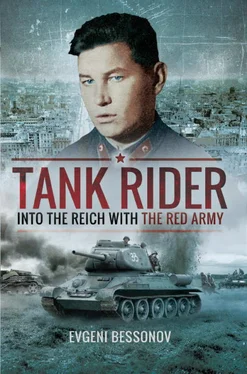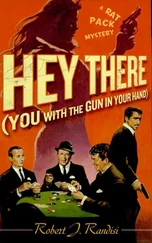In late May 1943 I was sent to the personnel section of the Moscow Military District. They sent me and other officers to a battalion of the officer reserve in Kuchino, in the vicinity of Moscow, where the battalion was stationed. I did not stay there for long, just around a month. We did almost nothing there and tried to get sent to the front as quickly as possible. In late July 1943 we, around 100 officers, were sent to the Bryansk front. We started our journey from Moscow by train, then we hitchhiked and then even had to walk. That was the time of the Kursk battle – one of the largest battles of the war. Our counter-offensive started successfully, but because of bloody fighting in defence and then in attack units suffered heavy losses both in men and officers. This is why the units of the Bryansk Front desperately needed replacements.
BAPTISM OF FIRE: THE OREL OFFENSIVE

Map to show the Bryansk front and the Orel offensive, 26 July 1943 to 20 August 1943.
We arrived at the HQ of the Bryansk front on 2 or 3 August, 1943, and were distributed among different armies of the front. Along with several other officers I was sent to the 4th Tank Army, which launched its attack on 26 July and was engaged in fighting, overcoming enemy resistance and advancing towards Orel. On around 8 or 9 August we arrived at the HQ of the 4th Army, which were located in a ravine with all the necessary camouflage against the enemy’s air force. During that period the army commander was Lieutenant-General V. M. Badanov. After a brief discussion with the chief of the army’s personnel section I was sent along with several other officers to the 6th Guards Mechanized Corps under the command of Major-General A. I. Akimov. From the personnel section of the Corps staff we were sent to different brigades; by that time I was only accompanied by five to seven officers from the 100 that departed from Moscow. Some were sent to the 16th Guards Mechanized Brigade, the others to the 17th Guards, while I was the only officer who was sent to the 49th Mechanized Brigade (it had not yet been awarded with the Guards title); the Brigade was commanded by Lieutenant-Colonel Petr Nikitich Turkin. After some hesitation, on 13 or 14 August the head of the personnel section of the Brigade decided to send me to the 1st motor rifle battalion as a replacement. The commander of the battalion at that time was Senior Lieutenant Terenti Grigorievich Kozienko; he became Captain as late as October 1943. They sent a runner from the battalion, so that I did not have to wander around the ravines looking for the battalion HQ. With the runner I reported my arrival for further service to the battalion chief of staff Captain S. P. Mazurov. The 1st battalion had just disengaged the enemy and the men were putting themselves in order. This brief pause in the fighting was a great help for me – I was able to get to know the personnel quickly outside active operations, during a half-day break. I was appointed the platoon leader of the 2nd platoon in the first company, which was under the command of Junior Lieutenant Petr Ivanovich Titov. I fought the whole war as the 2nd platoon leader and only in September–October of 1945 was I officially appointed the commander of the 1st company.
Petr Sergeevich Shakulo was the leader of the 1st platoon, while the leader of the 3rd platoon was Lieutenant Gavrilov (I forget his first name). The machine-gun platoon leader was not there – he was in hospital after receiving a serious wound. The company’s Sergeant-Major was Vasily Blokhin, former seaman of the Pacific Navy. The company had medic Safronov, company clerk Barakovski, as well as a sniper – a big Kazakh called Jambul. The deputy battalion commander for political affairs or zampolit was Abram Efimovich Gerstein and the deputy battalion commander (personnel section) was Senior Lieutenant Maxim Tarasovich Burkov, who was killed on 16 January, 1945. The 2nd motor rifle company was under Lieutenant Afanasi Nikitovich Gulik, while the 3rd was under Lieutenant Yuri Alexeevich Grigoriev, who became the battalion’s chief of staff in May 1944.
Sergeant Major Blokhin introduced me to the assistant platoon leader Senior Sergeant Sabaev and the orderly in the company. On the evening of the same day we moved forward to our attack position in order to assault the Germans in the morning. During the night we three officers of the company were summoned by company commander Titov, who gave us our combat objectives for the attack. I did not recognize the platoon leaders in the darkness; they did not recognize me either. At dawn the company formed a line and together with two other companies of the battalion walked with a rapid step towards the hill, having no idea if the enemy was defending it. That was my baptism of fire. This was no longer training, it was war, and the enemy was in front of us. The enemy first opened up with machine-gun fire from the hill and then launched a concentrated mortar barrage on us. Just as I had in training, I ordered the soldiers: ‘Forward run’, and ran forward myself – just as I had in training. All of a sudden my soldiers were no longer in front of me. I heard voices from the side, from a ravine, where the soldiers from the company and from my platoon had already taken cover. They started to dig in. I did not even have an entrenching tool, let alone weapons – neither a pistol nor a submachine-gun; I only received weapons a couple of days later. To the right of me there was a soldier who had already dug his skirmisher’s trench, so I asked for an entrenching tool from him. I dug in and made a breastwork. I gave the entrenching tool back to the red-headed man and asked who he was. He answered that he was platoon leader from the 1st company, Lieutenant Petr Shakulo. I had only seen him once in the night and did not recognize him in daylight. This is how Petr Shakulo became my best friend for the whole war. Our friendship lasted until his very death in 1988.
After darkness fell, we left the ravine and dug in at an open spot right in front of the hill, trying our best to camouflage our narrow foxholes from the enemy’s air force and from observation. During the night we received an order to repeat the assault on the enemy forces defending the hill. A night assault is a special type of combat, it is complicated and requires the close co-operation of all battalion units, even between the individual soldiers of the company; it also requires bravery and fearlessness.
The assault began well until we reached a barbed wire entanglement and the company had to lie down in front of it. How could we overcome the obstacle? We did not have wirecutters. It might well be that several soldiers could sneak under the entanglement together with me. But what about the rest? Would they follow? It was impossible to see in the darkness. Would they help me or would I help them – that’s the main thing in night combat. I did not know what to do and I sneaked out to look for Shakulo and Gavrilov, the two other platoon leaders of the company. The Germans were lighting up the area intensively with missiles, and I managed to find them. Lieutenant Nikolai Konstantinovich Chernyshov, platoon leader from the 2nd company, was also there with them. We all decided to withdraw to our starting positions.
We reported that we had failed to complete the mission and received a repeated order to seize the enemy’s trench. To give spoken orders meant making myself and other soldiers a target for the Germans. Even without any noise from our side the Germans were delivering horrible flanking machine-gun fire with tracer bullets that shone brightly in the darkness. We prepared our soldiers for the new assault and discussed with the other platoon leaders how we could best fulfil the order. I noticed that two Kazakh soldiers from the platoon did not join the platoon during the assault and stayed in their foxhole. I warned them strictly that they could be severely punished for cowardice. Incidentally, during the daytime assault my assistant platoon leader Sabaev also fell behind, saying that he had stomach-ache. That was the only time in my life when I told another person: ‘If this happens again, I’ll shoot you.’ Sabaev got the message, and in the second night assault I ordered him to check the foxholes, see if anyone had stayed behind and then join the assaulting line with those that he found. He fulfilled the order and no longer had stomach-ache.
Читать дальше














